Amphion Argon3s Speakers – Natural, Personal, Intimate Sound
Amphion Argon3s is a 3000 USD / EURO pair of bookshelf speakers with a 2-way configuration, a low crossover point, and with an interesting tech including a custom designed waveguide. They are going to be the stars of today’s review, and we will be comparing them with other high-end speakers, including SVS Prime Wireless PRO (899 USD), KLH Model Five (2499 USD), and Buchardt S400 (1800 USD).
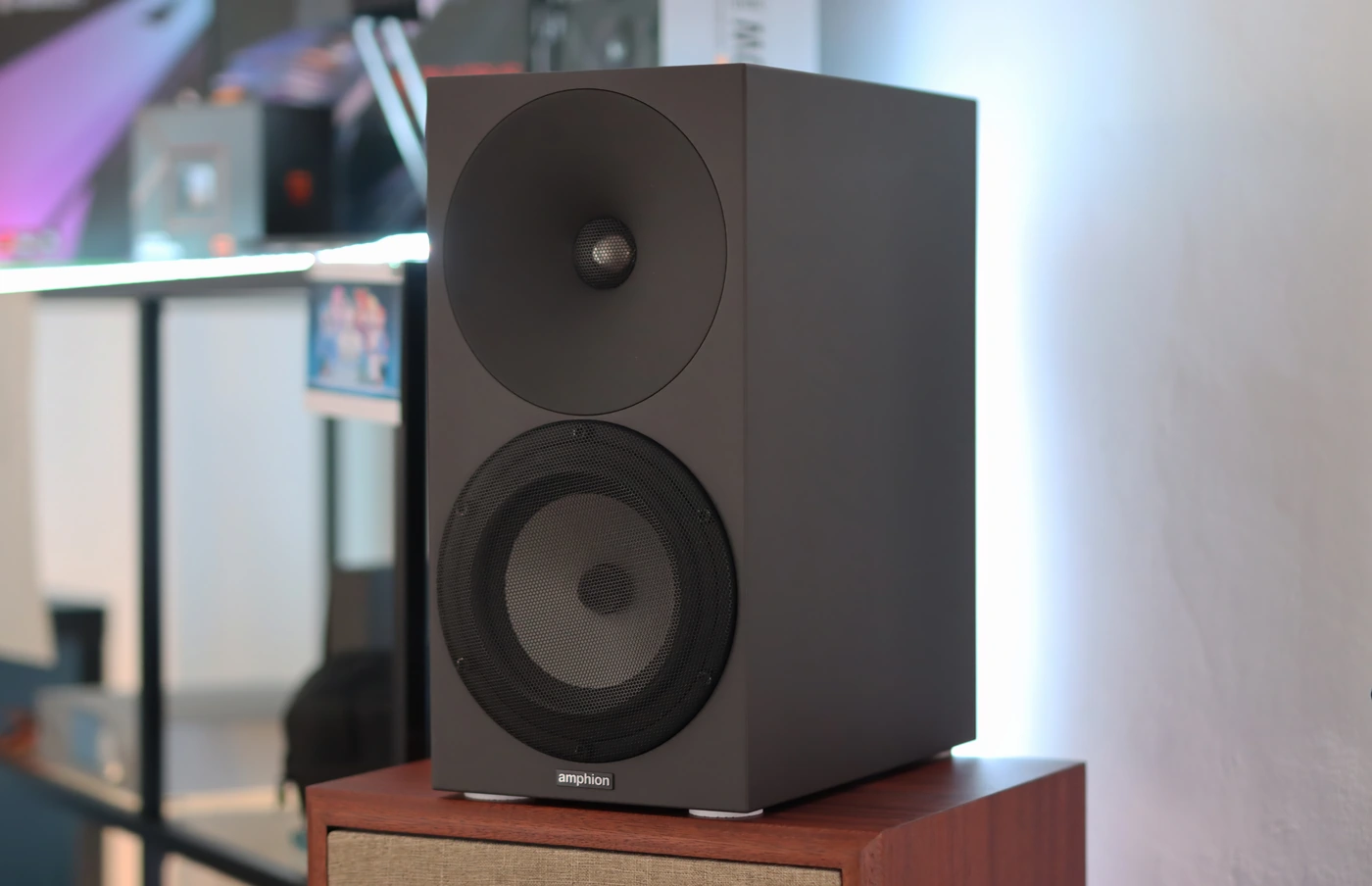
Introduction
The company Amphion sells the Argon3S for 1500 USD / EURO per piece, but given that we’re talking about stereo speakers I decided to include the pricing per pair instead. The company comes from Finland, and the speakers are handmade in Finland, with a 25 year experience in the speaker production field. Finland is generally one of the most expensive places on the planet, but Amphion makes speakers within very reasonable price ranges, so it will be interesting to see how they compare to the market. The build quality and craftsmanship is actually quite excellent on their products, and there is no space for loose or uneven edges with products from Amphion from what I’ve seen and tested.
I’d like to thank Amphion for providing the sample for this review, in exchange for my honest opinion. We are not receiving any incentive for this review and Audiophile-Heaven has no affiliation with Amphion beyond this review.
Product Link
Official Link – https://amphion.fi/products/argon3s/
You can grab one from www.amazon.com here: https://amzn.to/3S9YDQv
If you’re in the UK, you can grab one from www.amazon.co.uk here: https://amzn.to/3tDE5GW
And if you’re from Europe, you can grab one from www.amazon.de here: https://amzn.to/3RUp8Iz
Build Quality/Aesthetics/Fit/Comfort
Starting with the build of the speakers, Argon3s is a solid looking speaker, with a black matte finish design for the black version, finish which does not scratch easily, and doesn’t gather fingerprints easily. The speakers are tall, but narrow, they have one 6 and a half inch mid woofer made of aluminum, and one 1″ titanium driver. The speakers are passive, which means that you need a power amplifier to drive them, and they are two-way, which means that there are just two active drivers in the speaker. There is one passive driver at the back of the speaker, which also seems to be 6 and a half inch in size.
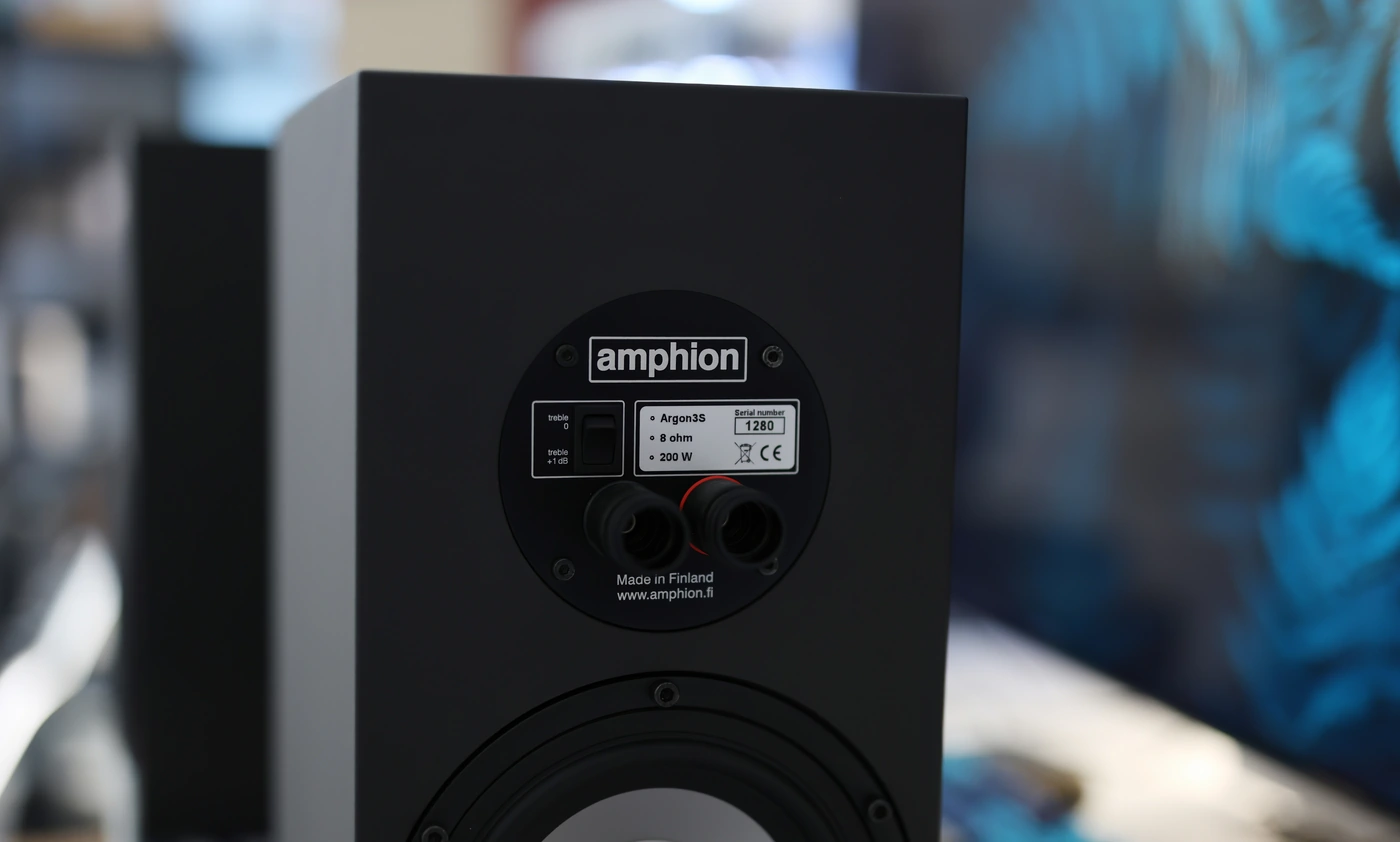
The design is super nice and while I heard my audiophile friends always having struggles with convincing their significant other to accept this hobby, as some equipment looks spartan and industrial, you will easily convince everyone with Argon3S, which looks really nice in person and feels like a high-quality product all the way.
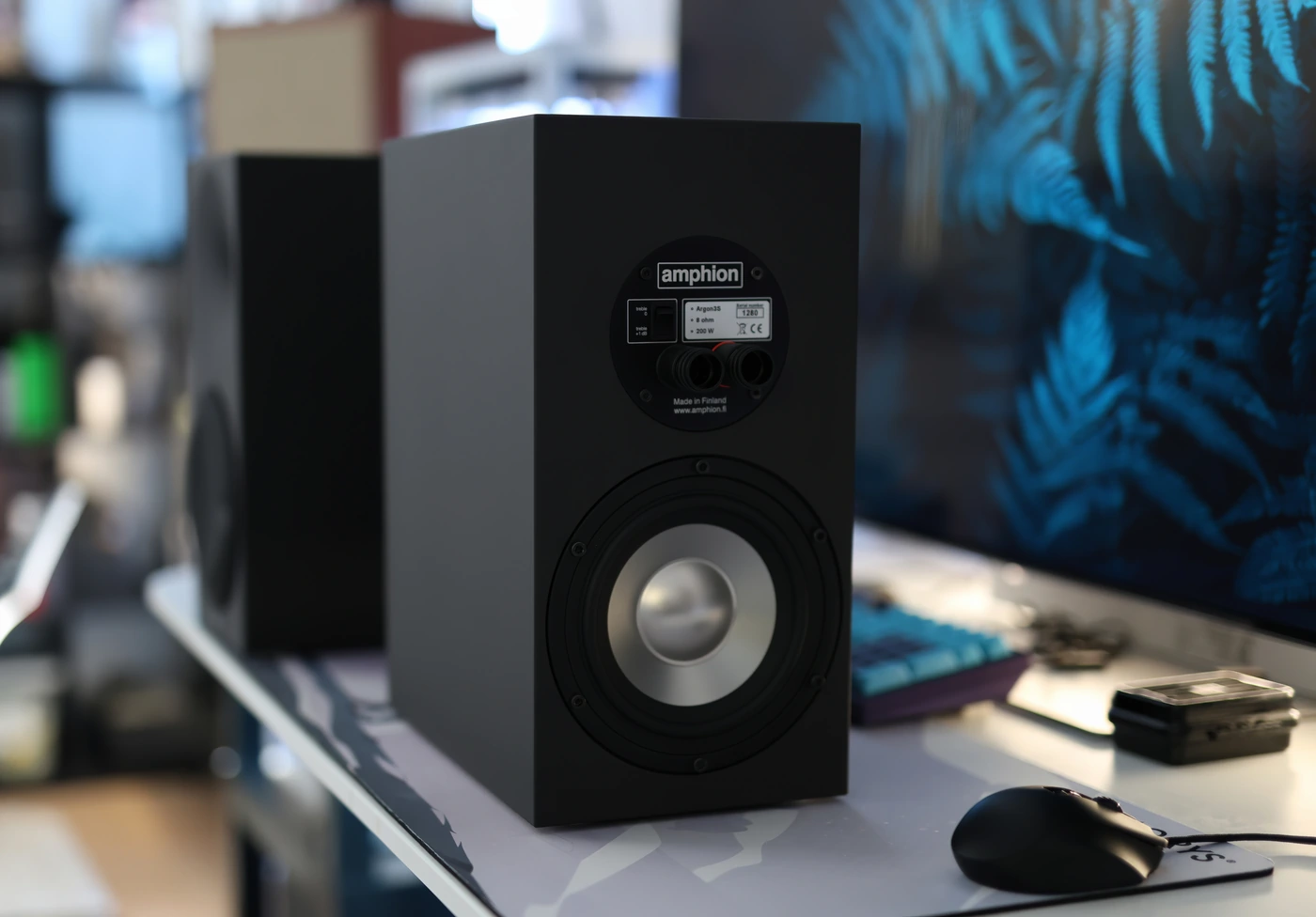
The speaker is closed, which means that the passive radiator in the back will help with the bass reproduction and should enhance the overall sound. We have a power rating of 50 – 150 W, which means that you will need an amplifier that can safely deliver between 150 and 300 W of power, as the rule of thumb for the best sound is having at least double the RMS power recommendation of the speakers at the amplifier level, to ensure the best sound and quality possible.
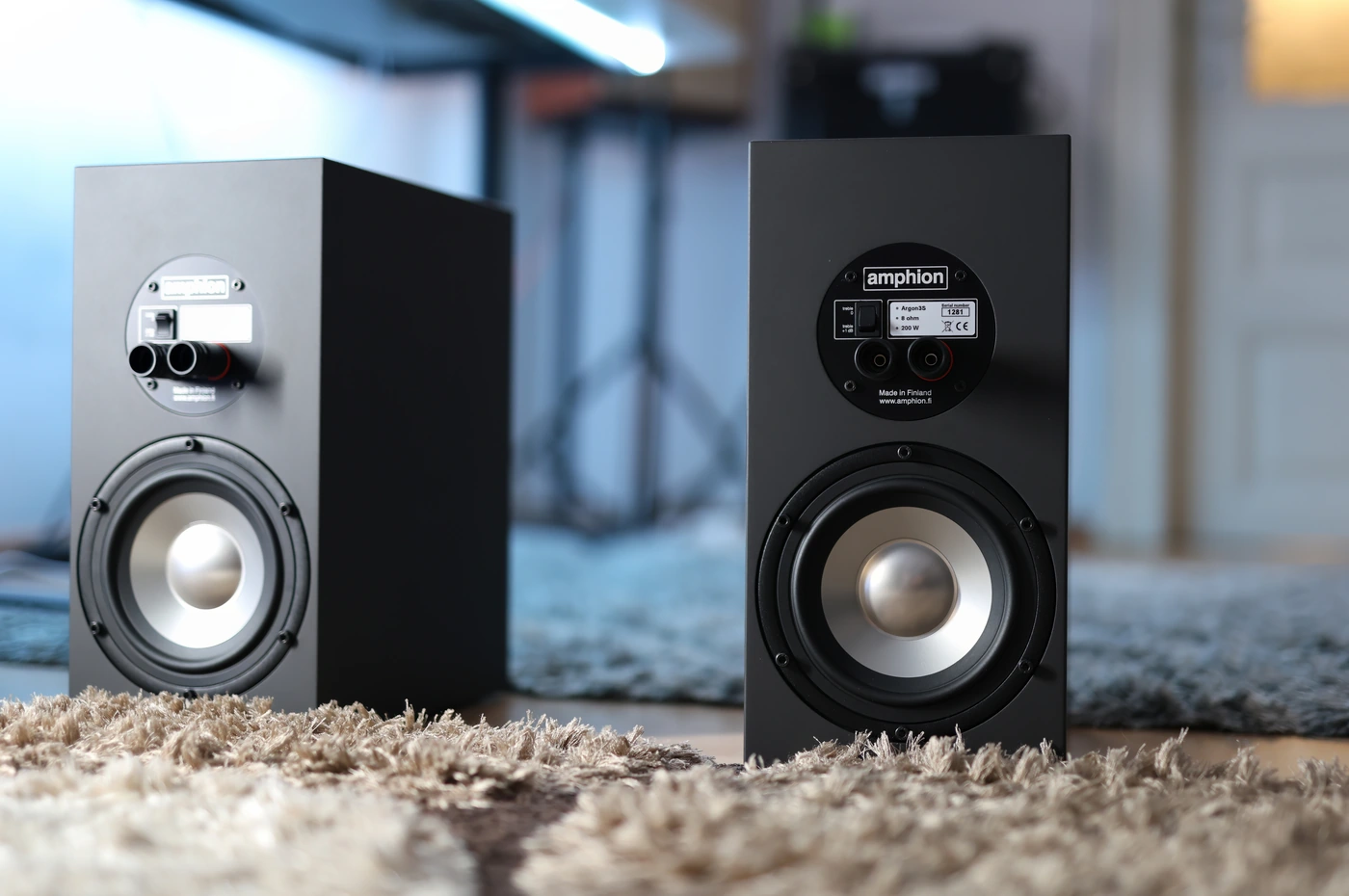
As each speaker has 10 KG of weight, they are very stable, but they do not come with any kind of feet to isolate them from the stands, so I have applied a custom solution for today’s review. The frequency response is quoted to be between 38 and 25.000 Hz, which is fair considering the drivers and the technology, but we will take a deeper dive into how they actually sound like when powered up in the Sound Quality part of the review. The 8 OHM impedance means that they will be an easy load for most amplifiers, and generally a higher impedance is easier to drive for an amplifier than a lower impedance which places more stress on most amps. The crossover point is at 1600 Hz, which is considered to be low by the company.
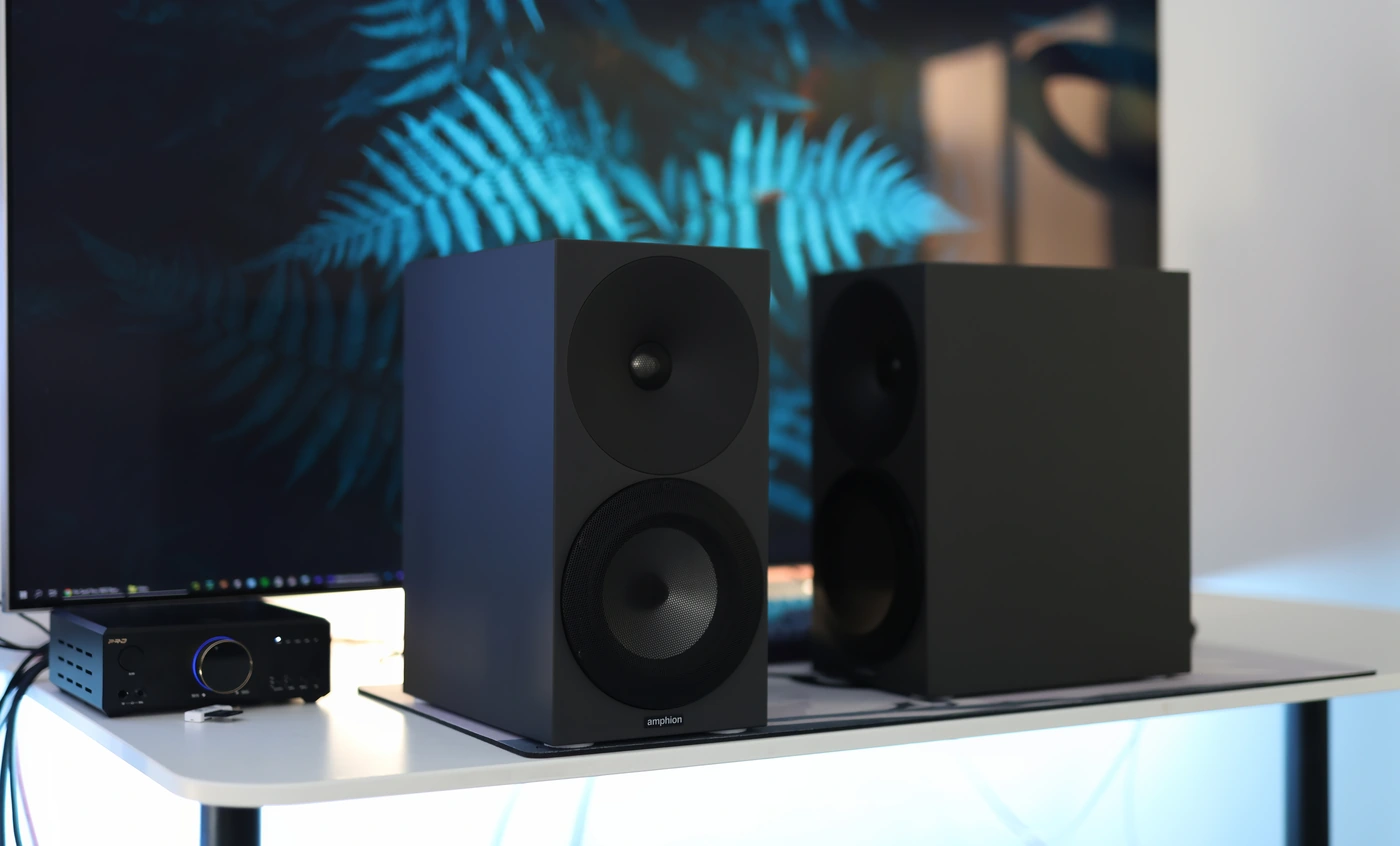
Amphion uses a special waveguide to enlarge the sweet spot for listening to the Argon3S, and I would say that it tends to sound good across an entire room, so you don’t need to stress too much about placing them. In fact, they have one of the widest dispersions that I ever heard, allowing me to sit literally anywhere between them and still have a great sound. The sound cone is around 120 degrees, with very little variation relative to vertical or horizontal placement, basically you can have them not even pointed at you, but still get a very consistent experience.
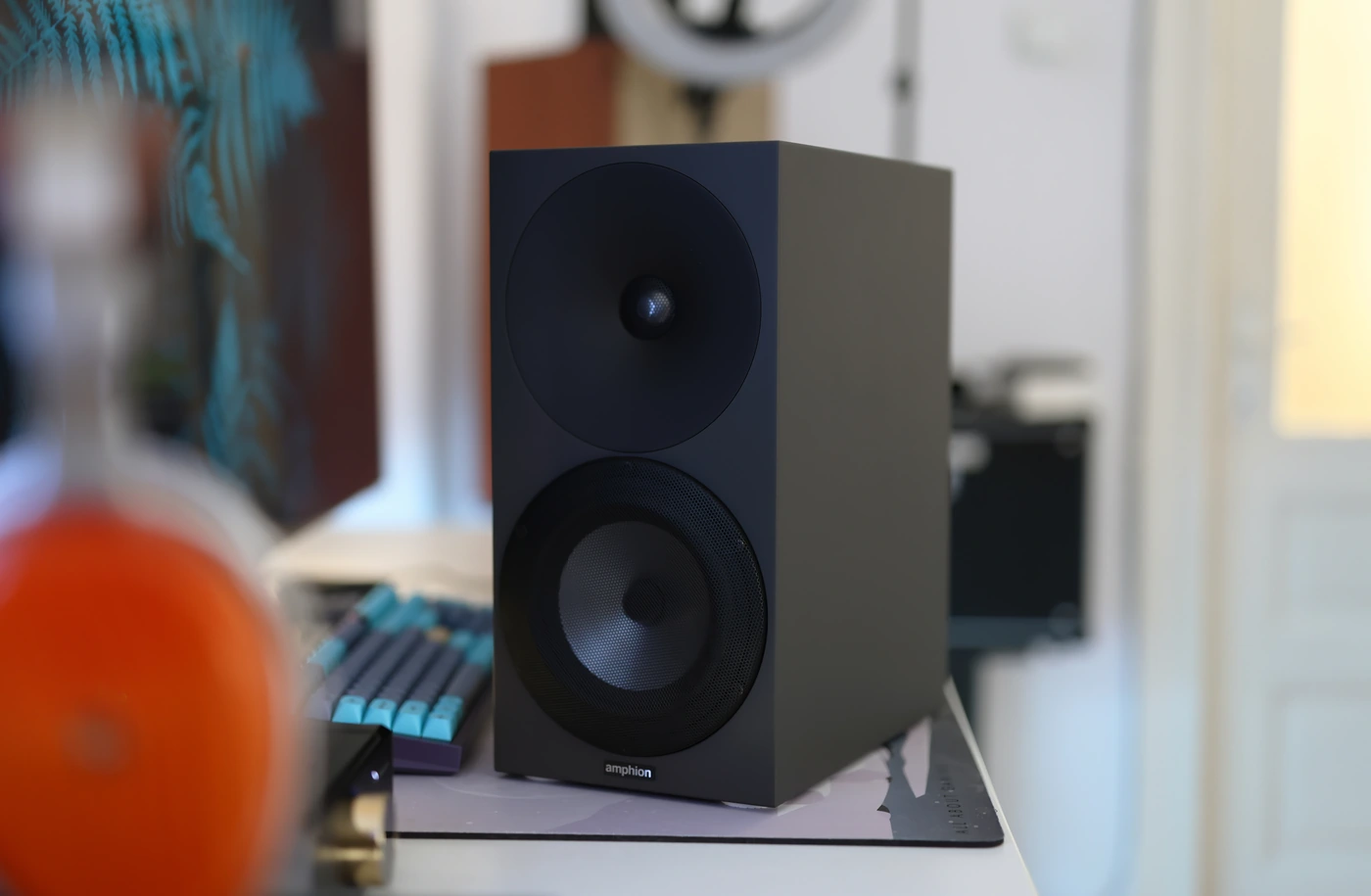
For driving the Argon3S, I’ve been using a collection of amplifiers, including SMSL AO300, Cyrus One Cast, Burson Funk, and Keces S300+. All of them can drive the speakers and produce sound, but the best sound is with beefier amplifiers, like S300+ or Cyrus One Cast. I enjoy the overall signature and presentation, and think you can do just fine with lower power amplifiers too, but Keces S300+ provides a much better dynamic range, wider soundstage and clarity than the other options.
Sound Quality
The sound of Argon3S is best at lower volumes, and the company quotes that they can be enjoyed at lower volumes, but to my ears they sound like they were designed to be enjoyed at quieter listening volumes, as they tend to be quite bright and aggressive, detailed but also can get sharp / shouty / harsh at high listening volumes. The overall sound is really clean, clear, crisp, bright, and if you’ll be looking for bass, your best bet is to get a subwoofer. There is no need for a super tweeter with Argon3S, and the treble is airier, more sparkly and more vibrant than even setups that add the Aperion Audio RST MKII super tweeters. The best part of the sound with Argon3S is the midrange, and although they are mid centric, the midrange is really enjoyable, musical, smooth and clean. The soundstage is fairly intimate, and although the dispersion is excellent, the speakers will convey a very precise, but intimate sound with very little extra in terms of space and dimensionality of the sound. The tuning is neutral / natural with the midrange being the most forward element. You always hear the voices of the singers really close to your ears, and things are always well defined.
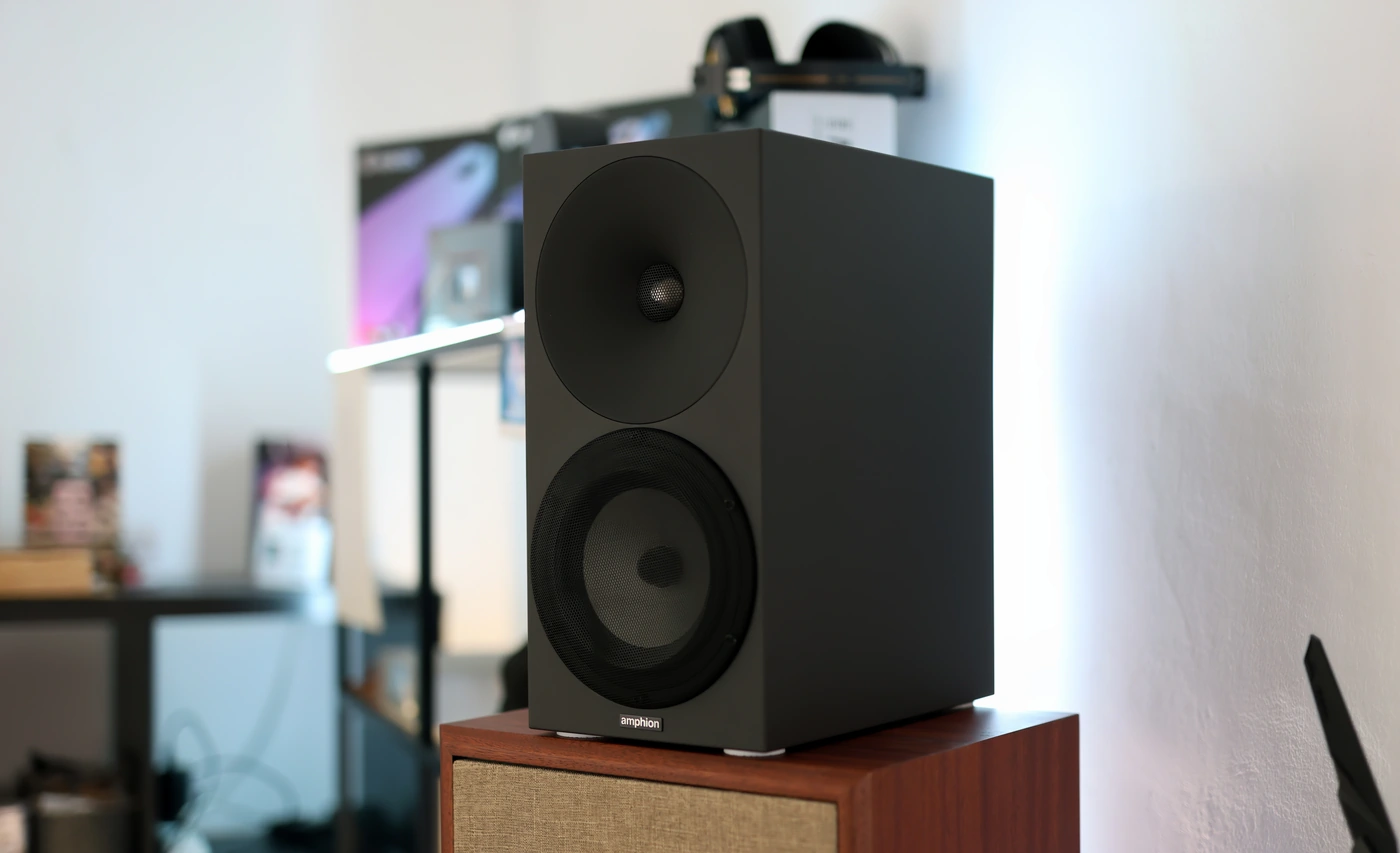
Starting with the bass, there is good bass reproduction starting with about 50 Hz, with not much low end information lower than this. Most of the bass energy and impact can be found around 60 – 65 Hz, where it adds some bass line and substance to music, along with some extra warmth, as Argon3S has a warmer tint to the midrange. The bass is tight and clean, with a good impact for drums and most instruments, but the quantity will not rattle your desk or walls, and the midrange is far more forward, so the bass will not overpower any frequency any day using the Argon3s. The upper bass is recessed, and there is good control in the 120 Hz range, so there is no veiling or forced warmth, just a bit of extra to make sure the sound has substance and good fundamentals.
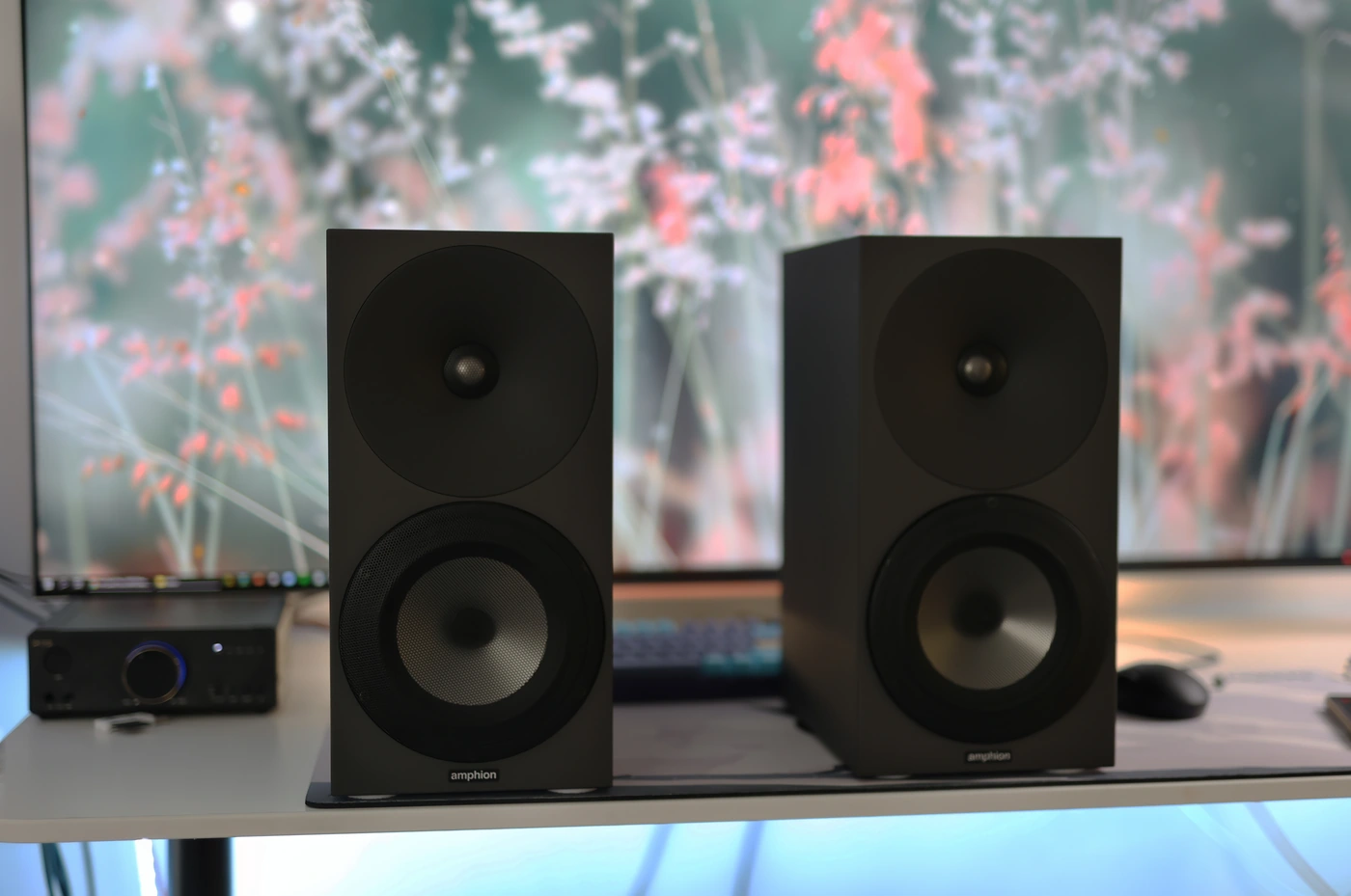
The midrange is the central key element of the argon3s sound, and they have a really clean, crisp and detailed midrange, with outstanding precision. Transients are natural towards sharp and detailed, which creates a good sense of resolution. Voicing is perfect, both male and female voices sound spot-on, and there is no coloration that I can hear in the midrange, the lower midrange is slightly more forward and pronounced than the upper midrange which creates a slightly “happy” sound, which emphasizes songs played in major more than those in minor. This makes most music listenable, and despite the somewhat strong transients or more pronounced textures, the sound is generally enjoyable and pleasing to the ear. The background layers are well separated from the foreground layers, but they are presented close to each other. Music that is voice centric sounds best with Argon3S, and they are tuned for pop, room music, most classical music, rock and acoustic music, while not being recommended for rap, electronic EDM, Metal or Dubstep. Bass heavy music in general is less ideal with Argon3S, and getting a subwoofer helps a lot.
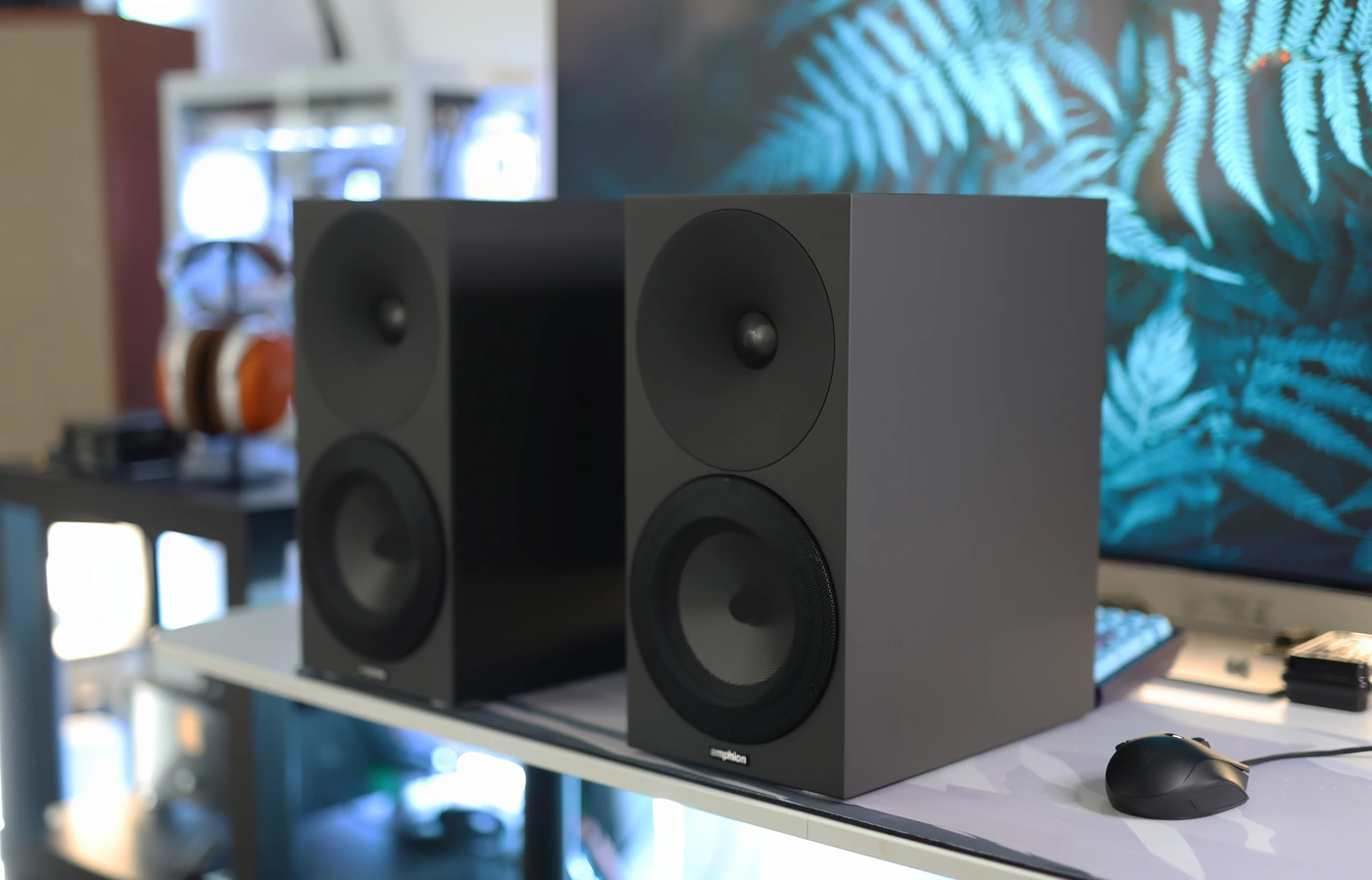
The treble makes a comeback and it keeps a strong feeling of transients, which are even stronger in the treble than they were in the midrange, which allows you to listen at very quiet levels without struggling to hear details, but creates a sharp and aggressive sound at medium and even more so at loud listening volumes. The dynamic range is ok, not perfect, since there is a bit of compression with higher volumes, at low volumes the dynamic range being best, and it gets more compressed the louder you go in sound. The soundstage is intimate, precise and Argon3S has good instrument separation, having in fact one of the best detail / resolution I’ve heard in the price range, but also having one of the most intimate and personal presentations I’ve heard in the range too. This means that if you’re looking for a really clean cut studio sound style, neutral sound styles or just generally precise, but not overly holographic sounds, Argon3s would be ideal for you.
Comparisons
Amphion Argon3s vs Buchardt S400 (3000 USD vs 1800 USD) – We can always start with a Butcher, and Buchardt S400 is an interesting option with a similar design to Amphion Argon 3s, which also gets the seal of approval from the family easily, but which has a much larger passive radiator at the back. The dispersion is much higher on Argon 3s, which can be heard even if heavily off-axis, while S400 has a narrow dispersion and you have a 45 degrees cone, so you have to have an almost perfect vertical and horizontal placement. It is easier to bring the S400 closer to a wall behind without big changes in the sound, but both sets require specialist room treatment to sound best. Both speakers need a lot of power, but S400 has a more colored sound, much warmer, smoother, with a heavier bass and lower amount of treble, so it needs a brighter amplifier and DAC, maybe even some EQ to sound the best. To describe the sound, S400 is also a very focused, somewhat narrow sounding speaker, also with a strong instrument separation and layering, but it has a bigger, bolder bass, and you could get away without a subwoofer with them, while Argon3S sounds more neutral and mid centric, and has a sweeter voicing. Because S400 has a stronger bass, it tends to be slightly less detailed, slower in sound and more romantic, creating a bigger, heavier sound, more lush, while Argon3S creates a quicker, more neutral sound that reveals voices more. The treble is where they differ most, with S400 sounding smooth, slightly rolled off, while Argon3S sounds more airy, has a sharper treble. Textures and Transients are harder, sharper on Argon3S, which has a much more realistic presentation, but which can be enjoyed at lower volumes more, while S400 comes to live at medium and higher volumes more, as they also are more dynamic and expand the dynamics instead of compressing at higher volumes.
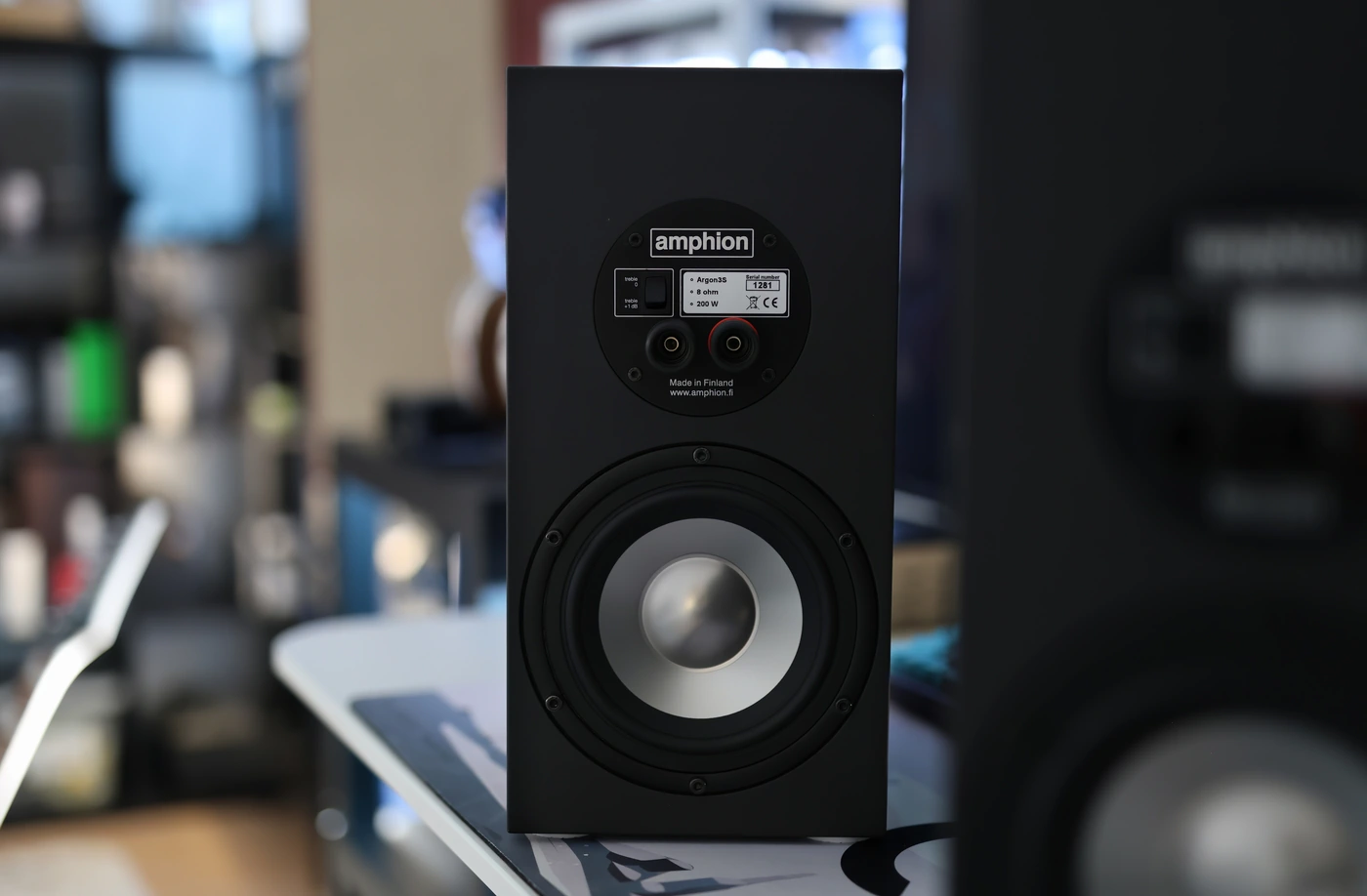
Amphion Argon3s vs KLH Model Five (3000 USD vs 2499 USD) – The build of Model Five is better, and especially with the wooden finish, they feel more like furniture, while Argon 3 s feels more like a high-end furniture piece. You will get a wife’s approval much easier with Argon3S, but they are a much smaller object, KLH Model Five has a much larger woofer, and you could get away without adding a subwoofer with them, while Argon3S requires one to be fully enjoyable. KLH Model Five is harder to drive and needs an even beefier amplifier to truly get going but the sound is different too, with KLH Model Five having a better bass depth, better impact, better resolution and a much wider sound in general. The midrange is slightly cleaner on the Agon3S, but it sounds very focused in comparison, which means that the soundstage does not extend a lot in width, while Model Five is really holographic, they have better layering and end up sounding more natural in general. The treble is brighter, more airy, yet slightly less fatiguing on Model five which has a smoother transient reproduction with less edginess, but still manages to convey the resolution and detail perfectly well. The price performance of Model Five is better, you may still need a subwoofer for them, and also a good amplifier, but they will fill a room more easily, and the technical performance is better, for a lower price point. The advantages of Argon3S and where it wins is in design, where it will get the family seal of approval more easily, and if you need something to enjoy at low volumes, where Argon3S is easier to enjoy, Model Five sounding better at louder volumes. The dispersion of Argon3S is better both laterally and vertically, the sound being more consistent regardless of how you’re sitting in your room, with Model Five the dispersion being lower and you having to have a good vertical and horizontal placement to get a good sound. Argon3s is more sensitive to the room acoustics and what is behind them / distance to the wall, Model Five sounds the same regardless of the distance from the wall behind and is far less sensitive to room acoustics.
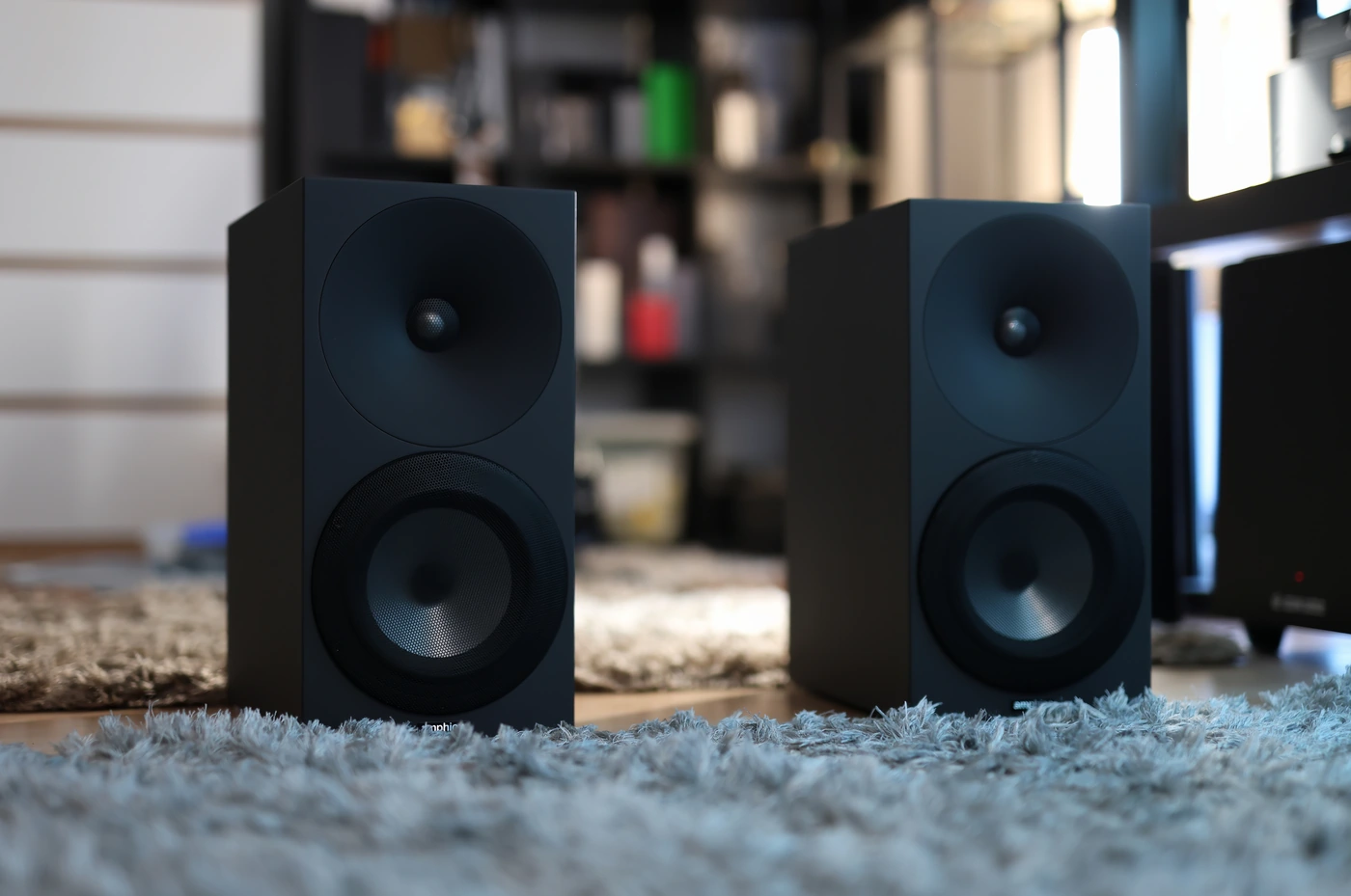
Amphion Argon3s vs SVS Prime Wireless PRO (3000 USD vs 899 USD) – Starting with the build, I actually had those two stacked in my room, and despite having more tech inside, Prime Wireless PRO is lighter, the piano finish feels less premium and scratches more easily, so Argon3S wins this part hands-down. The size of the midwoofer is larger on the Argon3S, but SVS and their experience with subwoofer allows the Prime wireless PRO to sound deeper, to have a more impactful bass, more low-end extension and give a more satisfying sound even without a subwoofer, but also to pair more seamlessly with a subwoofer, as they have a sub out on the speaker, while with Argon3S you will need to have a subwoofer output on the AMP or DAC. The midrange is clean for both, the baseline clarity is considerably better for the pricier Argon3S, but the soundstage is far more holographic on SVS Prime Wireless PRO, and although I can hear the characteristic Class D amplifier running in the SVS, the wider soundstage and more holographic presentation makes me go for them more, as I listen to a lot of new music, including metal, edm and pop. The treble is better on the Amphion argon3s, which has a brighter, more airy treble with a better extension, and I can enjoy them more for classical for this reason, but I can sort out the issue for SVS Prime wireless PRO by adding an Aperion Audio RST Super Tweeter. The price / performance ratio is considerably higher on SVS Prime Wireless PRO, and as both would require a subwoofer anyways, I would say that needing a beefy amplifier for Argon3s increases the cost of the setup considerably, but the end result will be more neutral / more detailed albeit more intimate in the soundstage too. Argon 3s has a slightly better dispersion, especially laterally than Prime wireless PRO, so it is somewhat easier to place in the room. Argon 3s is much more sensitive to how close they are to the wall behind, and room acoustics, with SVS Prime Wireless PRO you get a really good sound with no sound treatment, and they can be placed closer to a wall without losing quality.
Value and Conclusion
The price of a pair being 3000 EURO, we can feel the premium taken by the fact they are hand made in Europe, Finland, one of the most expensive countries out there, and generally, the sound of the Argon3S reminds me a bit of a high-quality vintage sound, with a bit of warmth, a mid centric presentation, and an intimate staging. The performance ratio is not as high as with more affordable products, or products made in other locations in general, but the style and excellent design, plus excellent dispersion helps balance the price / performance ratio a bit.
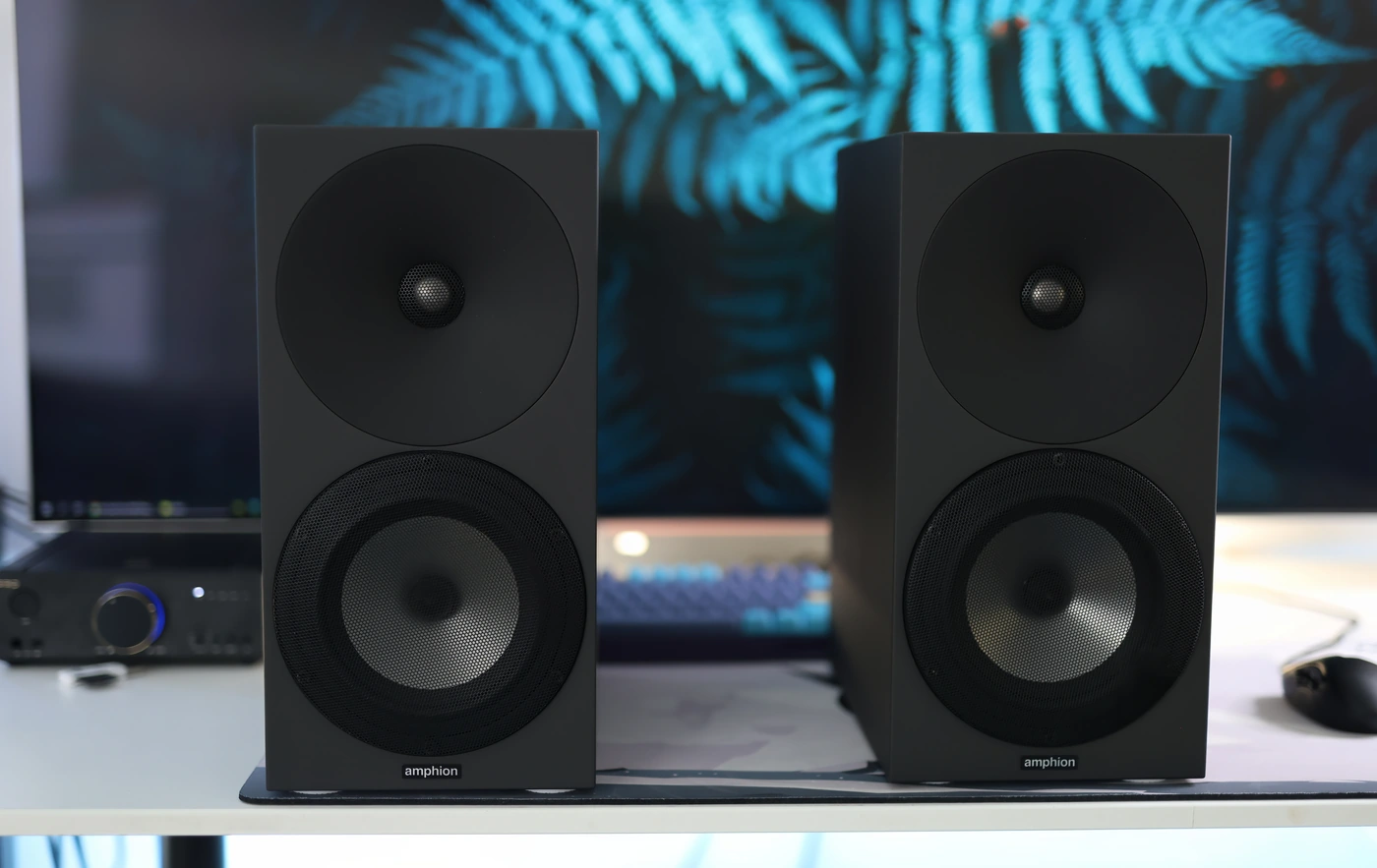
At the end of the day, if you’re looking for a pair of speakers that looks really good, sounds clean, tight and is mid centric, and a pair of speakers you will enjoy at low volumes, is not hard to handle for most amplifiers, and if you want your speakers to be handmade in Europe Argon3S should answer your question for a bookshelf speaker.
Product Link
Official Link – https://amphion.fi/products/argon3s/
You can grab one from www.amazon.com here: https://amzn.to/3S9YDQv
If you’re in the UK, you can grab one from www.amazon.co.uk here: https://amzn.to/3tDE5GW
And if you’re from Europe, you can grab one from www.amazon.de here: https://amzn.to/3RUp8Iz
--- Please remember to stay safe, and always have fun while listening to music!---
- If you have a dime to spare, please donate, and help us! It would make the day brighter for me and my wife-
Full Playlist used for this review
We listened to more songs than those named in this playlist, but those are excellent for identifying a sonic signature. I recommend trying most of the songs from this playlist, especially if you’re searching for new music! The playlists are different for Spotify, Tidal and Youtube, and based on the songs I enjoy and are available on each!
https://www.youtube.com/playlist?list=PL_cjBXGmwSHSdGcwuc_bKbBDGHL4QvYBu
https://open.spotify.com/playlist/5J3oloz8Riy9LxEGenOjQ0?si=979ba4f082414be7
https://tidal.com/browse/playlist/330fd544-8e5b-4839-bd35-676b2edbb3d5
--- Contact Us ---





